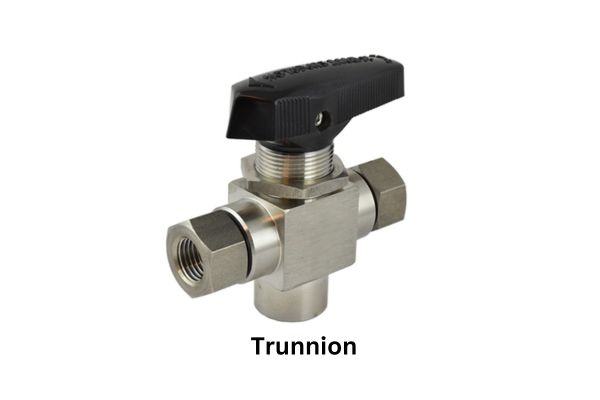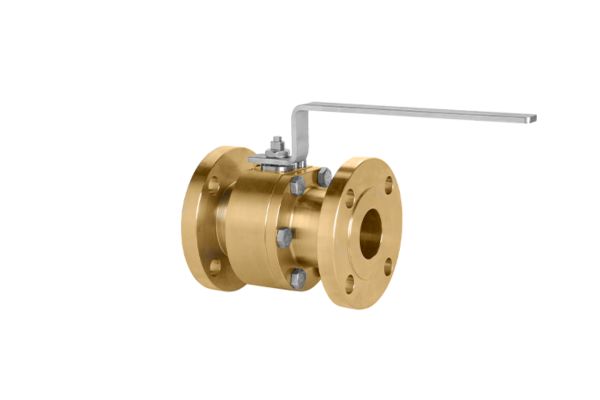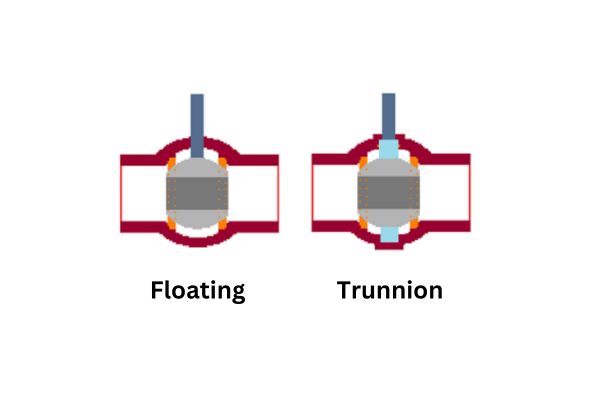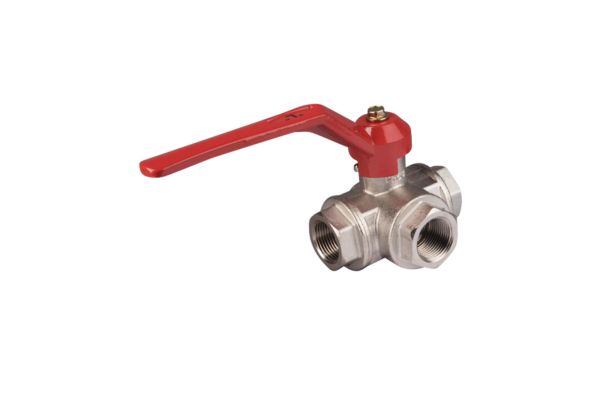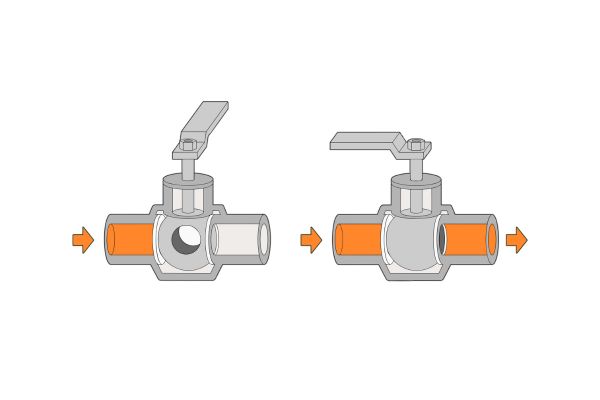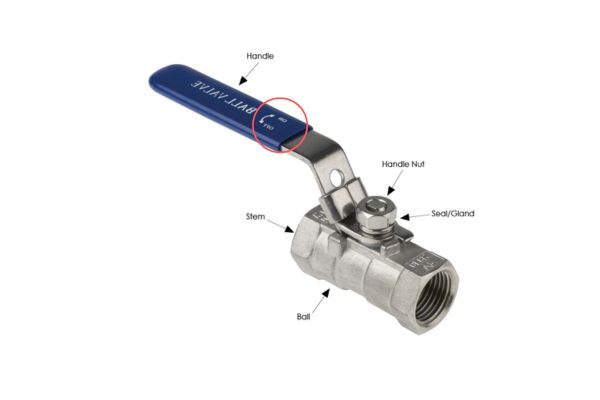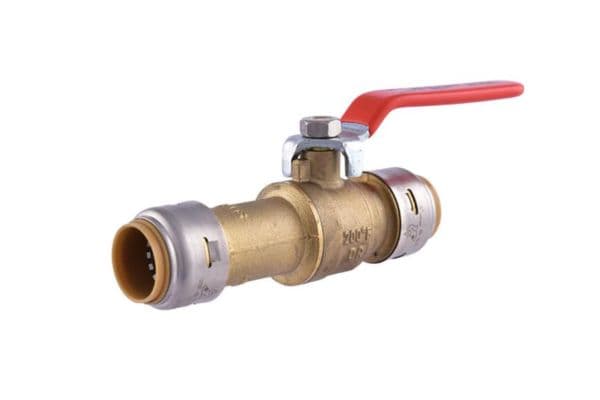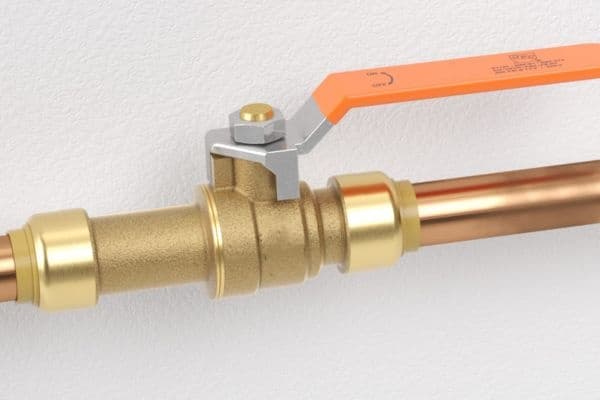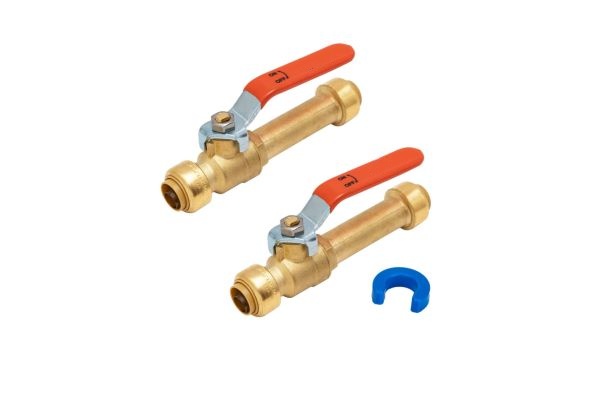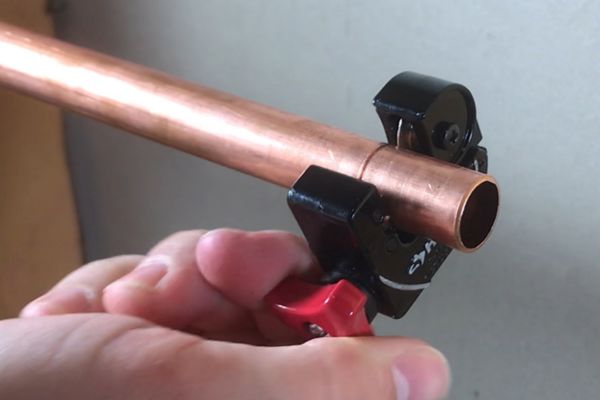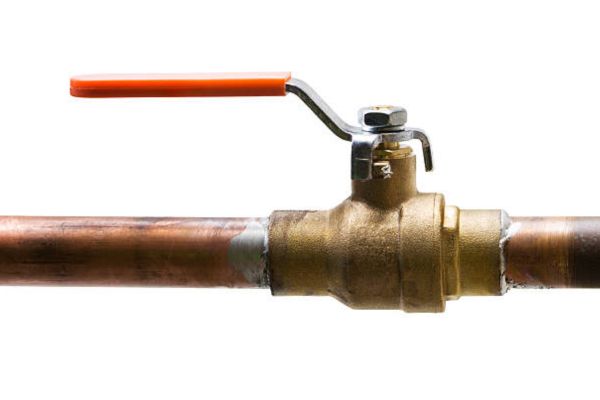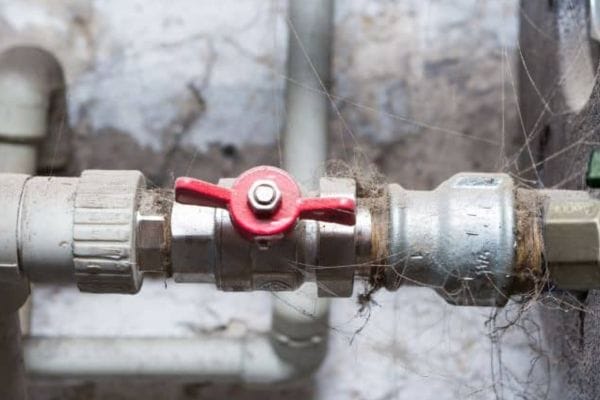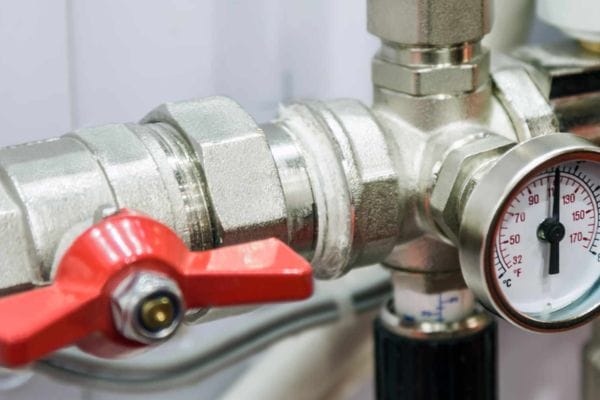Both diaphragm and ball valves are designed to regulate the flow of fluids within a system, but they do so in different ways. Diaphragm valves are ideal for controlling flow gradually, and their flexibility allows them to handle a wide range of fluid types. Ball valves, on the other hand, excel in providing a swift on/off mechanism and are better suited for applications where quick and reliable shutoff is necessary.
Diaphragm Valve
How a Diaphragm Valve Works
Overview of the Diaphragm Mechanism: Flexible Sealing for Fluid Control
Diaphragm valves are unique in their design, using a flexible diaphragm that acts as a seal. This diaphragm, which is typically made of rubber, elastomer, or thermoplastic materials, is pressed against a valve seat to stop or allow the flow of fluid through the valve. When the diaphragm is lifted or lowered by the actuator, it either opens or closes the flow path, providing precise control of liquid or gas flow.
The Role of the Diaphragm in Isolating the Fluid from the Actuator
One of the key advantages of diaphragm valves is their ability to isolate the fluid from the actuator. This isolation is crucial in applications where contamination could be a concern. Since the fluid never comes in contact with the actuator, there’s less risk of corrosion or contamination of the fluid or actuator components. This makes diaphragm valves particularly well-suited for applications in the food, pharmaceutical, and chemical industries, where hygienic conditions are paramount.
Step-by-Step Breakdown of the Diaphragm Valve Operation
Closed Position: In its closed position, the diaphragm is pressed against the valve seat, preventing any fluid from passing through.
Opening the Valve: The actuator moves the diaphragm upward, creating an opening in the valve seat. This allows the fluid to pass through the valve.
Flow Regulation: The movement of the diaphragm can be adjusted, offering fine control over the flow rate. The valve can be positioned to allow a small amount of flow or be fully opened for maximum flow.
Shutoff: When the diaphragm is returned to its closed position, the fluid flow is completely stopped, ensuring tight shutoff capabilities.
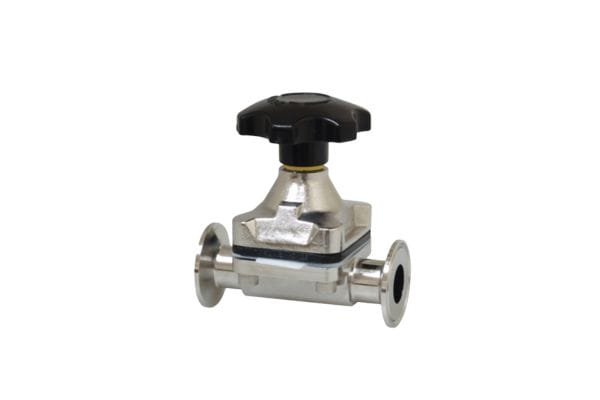
Common Applications of Diaphragm Valves in Fluid Handling Systems
Diaphragm valves are particularly effective in industries where clean and precise fluid control is necessary:
Pharmaceuticals and Biotechnology: Preventing contamination is a top priority. Diaphragm valves are ideal for aseptic applications.
Food and Beverage Processing: The hygienic design helps avoid contamination, making them suitable for food-grade fluids.
Chemical and Petrochemical Industries: Diaphragm valves can handle aggressive or corrosive chemicals due to their excellent corrosion resistance.
Water Treatment: Their simple, reliable design makes diaphragm valves a common choice for water and wastewater systems.
Key Features of Diaphragm Valves
Precise Flow Regulation and Tight Shutoff Capabilities
Diaphragm valves are known for their ability to regulate fluid flow with high precision. The flexible diaphragm can be adjusted with fine control, allowing for very specific flow rates. When it comes to shutoff, diaphragm valves provide a reliable seal, ensuring that the valve does not leak, even under pressure.
Self-Draining Design for Hygienic Applications
Many diaphragm valves feature a self-draining design, making them an excellent choice for hygienic applications where fluid residue must be avoided. The self-draining feature ensures that the valve is easy to clean and sanitize, reducing the risk of bacterial growth and contamination.
Resistance to Corrosion and Abrasive Fluids
Diaphragm valves can be built with materials that resist corrosion and wear, making them suitable for handling aggressive chemicals or abrasive slurries. The diaphragm, typically made from elastomers or plastics, provides a durable barrier between the fluid and the valve body.
Compact Design for Space-Constrained Installations
Diaphragm valves are relatively compact and can fit into spaces where other types of valves may be too large or cumbersome. This makes them ideal for installations where space is at a premium.
Valve Comparison: Performance Metrics That Matter
Flow Rate and Control Accuracy: Which Valve Performs Better?
Understanding Flow Rate: How It Impacts System Performance
Flow rate refers to the volume of fluid passing through the valve per unit of time, typically measured in liters per minute (LPM) or gallons per minute (GPM). The flow rate is crucial for ensuring that the system operates within its intended capacity. A valve that doesn’t meet the required flow rate can lead to inefficiencies, pressure drops, or even system failure. It’s vital to match the valve’s flow characteristics with the system’s demands to maintain performance and avoid operational disruptions.
Ball Valves: Precision and Quick Action for High-Flow Applications
Ball valves excel in high-flow environments, offering excellent flow characteristics with minimal resistance. Their spherical design allows for smooth, uninterrupted flow when fully open, making them ideal for applications that require quick shutoff and immediate response. Their actuation speed makes them suitable for systems where precision and speed are essential, like in hydraulic systems or natural gas pipelines. Ball valves are particularly efficient in applications where fast flow regulation is needed.
Diaphragm Valves: Fine Flow Control for Low to Medium Flow Systems
Diaphragm valves, on the other hand, are designed for fine-tuned flow control, particularly in low to medium flow systems. The flexible diaphragm provides a more gradual response than the ball valve, making it ideal for applications requiring precise adjustments or for those involving viscous, abrasive, or slurry fluids. Although diaphragm valves can be slower to act compared to ball valves, they provide excellent flow modulation in systems that demand fine control over long periods.
Which Valve Offers Greater Control in Sensitive Applications?
For sensitive applications, such as those found in pharmaceuticals, food processing, or chemical manufacturing, diaphragm valves tend to provide better control. Their ability to regulate flow gradually and offer tighter shutoffs makes them ideal for environments where fluid contamination must be minimized. Ball valves, while fast, can sometimes be less suitable for delicate fluids due to their quick action, which might disturb the flow or cause inconsistent results in sensitive processes.
How to Choose the Right Valve Based on Flow Requirements
When selecting between diaphragm and ball valves, consider the flow characteristics of your system. For high-flow applications with quick shutoff needs, a ball valve is typically the better choice. For precise control in lower-flow environments or systems requiring hygienic conditions, a diaphragm valve is more appropriate. It’s important to evaluate the total system flow requirements, pressure conditions, and fluid characteristics to make the most effective valve selection.
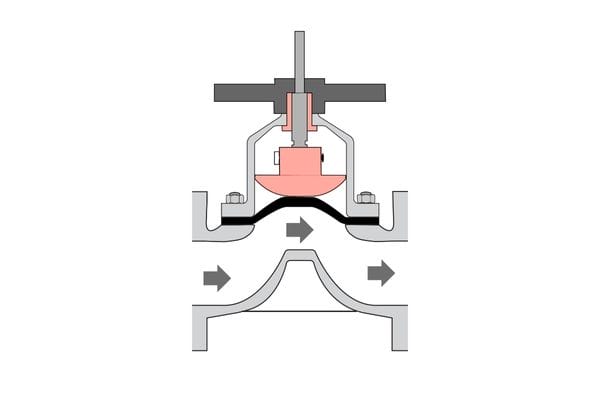
Pressure Handling and Flow Regulation
Diaphragm Valves: How They Handle Pressure Fluctuations
Diaphragm valves are known for their flexibility in handling pressure fluctuations. The diaphragm mechanism allows the valve to adjust dynamically to pressure changes, making it ideal for applications where pressure can vary. This flexibility helps prevent damage to the system and maintains stable flow, even when pressure is inconsistent. However, diaphragm valves may struggle in systems where very high or extreme pressure is a constant.
Ball Valves: Maintaining Consistent Pressure in High-Flow Systems
Ball valves are engineered for high-pressure applications and are known for their ability to maintain consistent pressure in high-flow systems. Their robust construction and tight sealing capabilities ensure that pressure is evenly maintained, even in more demanding systems such as oil and gas pipelines, chemical reactors, and industrial machinery. Ball valves excel in environments where maintaining constant pressure is critical to system performance.
Comparing Pressure Resistance: Ball vs Diaphragm in High-Pressure Environments
In high-pressure environments, ball valves are generally superior due to their stronger and more durable design. Their metal-to-metal sealing surfaces provide superior resistance to high pressures and can handle harsher conditions without compromising performance. Diaphragm valves, while excellent for moderate pressure systems, may require frequent maintenance or replacement in high-pressure environments, as their flexible sealing materials may wear out or degrade under intense pressure conditions.
The Role of Each Valve in Flow Regulation and Maintaining Stability
Both diaphragm and ball valves play a vital role in regulating flow and maintaining stability within fluid systems. Diaphragm valves are often used for fine-tuning flow, providing smooth, incremental adjustments, which is especially important in sensitive systems. Ball valves, with their quick-response action, are more suited for rapid flow changes and are often used in systems requiring less fine control but greater speed and reliability.
Pressure-Relief Systems: Which Valve Is More Effective?
In pressure-relief systems, ball valves are typically preferred due to their ability to provide quick and reliable pressure regulation. When used with automated actuators, ball valves can open and close rapidly, making them ideal for relieving excessive pressure in critical situations. Diaphragm valves, although effective at regulating flow, are less suited for rapid pressure changes due to their slower actuation times.
Diaphragm Valve vs Ball Valve: Key Differences in Valve Operation
Actuation and Response Time
Ball Valves: Quick and Efficient Actuation for Immediate Flow Control
Ball valves are known for their rapid actuation, making them ideal for systems where immediate shutoff or flow control is required. The quarter-turn design allows the valve to open or close quickly, which is essential in high-pressure applications or emergency shutdown situations. Ball valves typically offer swift, on-demand response times, making them perfect for processes where precise and rapid flow control is critical, such as in gas pipelines or water treatment plants.
Diaphragm Valves: Slower Response Time, Ideal for Gradual Flow Regulation
In contrast, diaphragm valves have a slower response time. While they may not offer the same speed as ball valves, their unique design allows for precise regulation of fluid flow, making them better suited for applications that require gradual adjustments. The diaphragm mechanism, which moves gradually to control flow, is perfect for sensitive systems like those in pharmaceutical or food industries, where fine-tuned control is more important than speed.
Comparing Actuation Types: Manual vs. Automated Actuation in Both Valves
Both ball and diaphragm valves can be actuated manually or automatically, depending on the system’s needs. Manual actuation offers simplicity and is often used in smaller systems or where flow changes are infrequent. Automated actuators, on the other hand, provide consistent control for more complex operations. Diaphragm valves may often require more frequent adjustments due to their gradual response, while ball valves excel in automated systems requiring precise, quick adjustments.
Which Valve Offers Faster Response for Emergency Shutdowns?
In emergency shutdown scenarios, ball valves are the preferred choice due to their fast quarter-turn operation. This makes them crucial for applications like fire suppression systems, chemical plants, and oil rigs, where swift action can be the difference between a contained issue and a catastrophic failure.
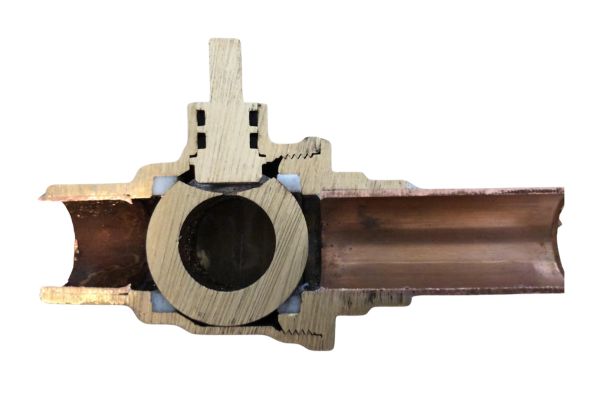
Seal and Leakage Resistance
Ball Valves: Reliable Sealing Mechanism for Tight Shutoff, Minimal Leakage
Ball valves are renowned for their tight sealing capabilities, making them highly effective at preventing leaks. Their spherical ball design, with a bore that matches the pipe size, ensures a secure seal when closed. As the ball rotates, it either allows or stops flow with minimal risk of leakage. This tight shutoff ability makes ball valves ideal for high-pressure systems or applications where leakage could be hazardous or costly.
Diaphragm Valves: Enhanced Leak Resistance Through Flexible Seals
Diaphragm valves, on the other hand, rely on the diaphragm’s flexibility to create a seal between the flow media and the actuator. This provides a high level of leak resistance, especially in applications where exposure to corrosive or abrasive fluids is a concern. The flexibility of the diaphragm allows it to maintain a secure seal over time, even in challenging conditions.
Leakage Considerations in Each Valve Type: When to Expect Leakage Issues
While both valve types are designed to minimize leakage, they are susceptible to different forms of wear. In ball valves, leakage typically occurs due to seal degradation or valve seat wear, especially under high-pressure or high-frequency use. In diaphragm valves, the primary concern is the wear and tear of the diaphragm material, which can lead to leakage if not maintained properly.
How Each Valve Handles Seal Wear and Tear Over Time Ball valve seals, especially those made from elastomers or PTFE (Teflon), tend to wear down under constant exposure to high-pressure conditions or aggressive chemicals. This can result in leaks or inefficient flow control. Diaphragm valves are more susceptible to diaphragm fatigue over time, which can affect their sealing capacity. Regular inspections and material replacements are necessary to maintain leak resistance in both valve types.
Choosing the Right Valve for Leak-Free Operation in Critical Systems
For systems where leaks could result in significant risks (e.g., hazardous materials handling), both valve types offer solutions, but the choice depends on the operating conditions. Ball valves are ideal for applications that demand quick and tight shutoff, while diaphragm valves excel in handling corrosive and abrasive fluids where a flexible, durable seal is essential.
Shutoff Mechanisms: How Do They Differ?
Ball Valves: Fast Shutoff Capabilities for High-Pressure Systems
Ball valves are renowned for their ability to provide rapid shutoff. With just a quarter turn of the actuator, the valve can fully close, offering a quick and reliable seal in high-pressure systems. This makes them ideal for use in applications where the ability to shut off the flow immediately is crucial, such as in emergency situations or for controlling hazardous fluids.
Diaphragm Valves: Gradual Shutoff with Greater Flow Control
Diaphragm valves, on the other hand, provide a more gradual shutoff. As the diaphragm moves towards the valve seat, the flow is slowly restricted. This design offers greater control over the flow but can be slower than the immediate response of a ball valve. Diaphragm valves are often used in systems where gradual adjustments to flow are required, such as in dosing or metering applications.
Comparing Shutoff Mechanisms in Critical Applications
In critical applications, where rapid changes in pressure or flow could be dangerous, ball valves are often preferred due to their speed and reliability in shutting off flow quickly. However, diaphragm valves are favored in systems that require controlled, precise flow regulation without the need for immediate shutoff.
Valve Selection Criteria: How to Make the Right Choice
Key Considerations When Selecting a Valve for Your System
Choosing the right valve for your fluid control system is critical for optimizing performance, minimizing downtime, and reducing maintenance costs. Here are the primary factors to consider:
Application Requirements: Determine whether the valve will handle liquids, gases, or slurries, and whether the application requires specific materials for hygiene, corrosion resistance, or high temperatures.
Flow Rate and Pressure: Assess the flow rate requirements and pressure range of your system to ensure the valve can accommodate both without compromising performance.
Temperature and Environmental Conditions: Ensure the valve can withstand the operating temperature range and environmental conditions (e.g., corrosive environments, extreme temperatures, or high-vibration settings).
Valve Type and Operation Mode: Consider the valve’s functionality—whether a quick shutoff or fine flow control is needed, and whether manual or automated actuation is preferred for your application.
How Flow Control and Pressure Affect Valve Choice
Flow control and pressure regulation are critical factors in valve selection:
Flow Control Needs: If your system requires precise and consistent flow regulation, a diaphragm valve might be a better choice due to its fine flow control capabilities. On the other hand, ball valves are more suitable for systems where high flow rates and quick on/off control are necessary.
Pressure Considerations: Ball valves are often more suited for high-pressure applications due to their robust construction and ability to maintain stable pressure. Diaphragm valves, while effective in a range of pressures, are typically used in lower to medium pressure systems where gradual pressure adjustments are needed.
When selecting a valve, consider how well it can handle variations in pressure and how it affects flow stability within your system. The wrong choice can lead to inefficiencies, safety risks, or increased operational costs.
Conclusion
By selecting the appropriate valve—whether it’s a diaphragm valve for precise control and leak resistance, or a ball valve for fast, high-flow applications—you’ll optimize both efficiency and reliability in your system.
FAQ
What is the main difference between a diaphragm valve and a ball valve?
The main difference lies in their design and function. Diaphragm valves use a flexible diaphragm to control fluid flow, offering fine regulation and leak resistance. Ball valves, on the other hand, use a spherical ball to open and close the flow path, providing quick shutoff and high-flow capabilities.
Which valve is better for high-flow applications?
Ball valves are better for high-flow applications because they allow for smooth, unrestricted flow with minimal resistance, making them ideal for fast operations and high-pressure systems.
Are diaphragm valves suitable for hygienic applications?
Yes, diaphragm valves are highly suitable for hygienic applications. Their design ensures fluid does not contact the actuator, reducing contamination risks, which makes them ideal for industries like food processing, pharmaceuticals, and biotechnology.
Do diaphragm valves require more maintenance than ball valves?
Yes, diaphragm valves generally require more maintenance due to the flexible diaphragm that can wear out over time, especially in abrasive or harsh environments. Ball valves, in contrast, have fewer moving parts and tend to require less maintenance.
Which valve offers better leak resistance?
Diaphragm valves typically offer better leak resistance because the flexible diaphragm creates a tight seal that prevents leaks. Ball valves also offer reliable sealing but may experience wear and leakage over time, especially if improperly maintained.
How do I choose the right valve for my system?
Choosing the right valve depends on your system’s flow rate, pressure, temperature, and the level of precision needed. A ball valve may be the best choice if you need fast shutoff and can handle higher flows. A diaphragm valve is preferable for more precise flow control and leak resistance, especially in low—to medium-flow systems.






